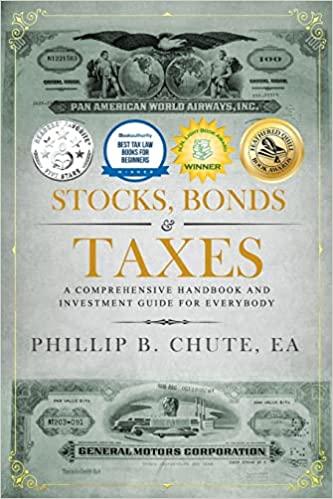Answered step by step
Verified Expert Solution
Question
1 Approved Answer
Question 3 ( total 5 0 % ) Personal taxes, Costs of financial distress, and firm value Overnight Publishing Company ( OPC ) has $
Question total
Personal taxes, Costs of financial distress, and firm value
Overnight Publishing Company OPC has $ million in excess cash. The firm plans
to use this cash either to retire all of its outstanding debt or to repurchase equity. The
firm's debt is held by one institution that is willing to sell it back to OPC for $ million.
The institution will not charge OPC any transaction costs. Once OPC becomes an all
equity firm, it will remain unlevered forever.
If OPC does not retire the debt, the company will use the $ million in cash to buy
back some of its stock on the open market. Repurchasing stock also has no
transaction costs. The company will generate $ million of annual earnings before
interest and taxes in perpetuity regardless of its capital structure. The firm immediately
pays out all earnings as dividends at the end of each year. OPC is subject to a
corporate tax rate of percent, and the required rate of return on the firm's unlevered
equity is percent. The personal tax rate on interest income is percent, and there
are no taxes on equity distributions. Assume initially that there are no bankruptcy
costs.
a What is the value of OPC if it chooses to retire all of its debt and become an
unlevered firm?
b What is the value of OPC if it decides to repurchase stock instead of retiring its
debt? Hint: Remember the formula for the effective tax rate
where denote the rates of corporate tax, equity tax and interest tax,
respectively.
c Assume now that expected costs of financial distress have a present value of
$ How does this influence OPC's decision?
d What is the main problem in estimating the effective tax rate of a company?
e Compare the optimal level of debt of a firm with high expected costs of financial
distress to a firm with virtually no expected costs financial distress. What are
the limits to leverage for the second firm?
f Give three examples of indirect costs of financial distress and state in which
industries such costs are likely to be important.

Step by Step Solution
There are 3 Steps involved in it
Step: 1

Get Instant Access to Expert-Tailored Solutions
See step-by-step solutions with expert insights and AI powered tools for academic success
Step: 2

Step: 3

Ace Your Homework with AI
Get the answers you need in no time with our AI-driven, step-by-step assistance
Get Started


